Here include 30 Red Tourism routes in Beijing, on your way, you will find revolutionary holy places, memorials, and Hutongs, parks, famous mountains and rivers and other scenic spots. Allowing you to enjoy the scenery and know about the history of New China at the same time!
01 New Cultural Movement Tracking Tour
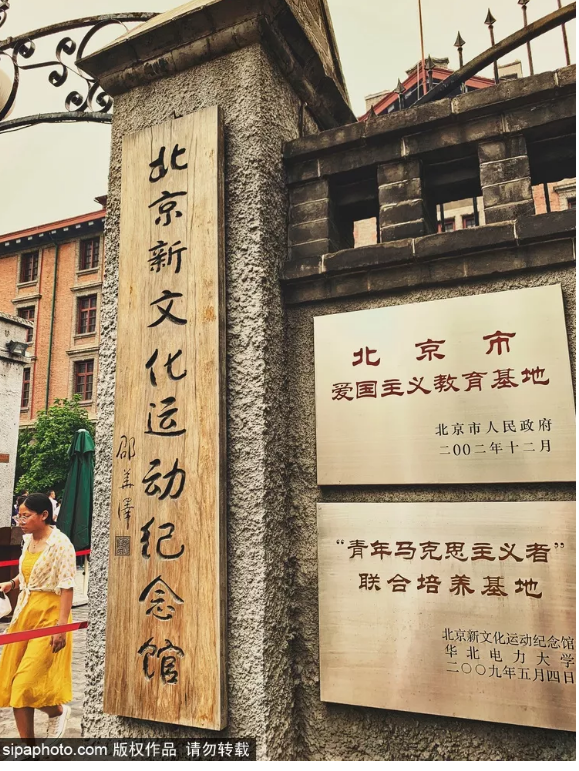
① Itinerary: Visit the New Culture Movement Memorial Museum, the Shatan Back Street, the Ji’ansuo Left Lane, and the Zhonglao Hutong.
② Brief Introduction:
Beijing New Culture Movement Memorial Hall (National Classic Red Tourism Scenic Spot): located in the old site of Peking University Red Building on Shatan Street in Dongcheng District. Peking University is the centre of the New Culture Movement and the birthplace of the May 4th Movement. In April 2002, the Beijing New Culture Movement Memorial Hall was officially opened to public as one of the first batch of red tourist attractions named by the national and Beijing governments.
Shatan Back Street: the alley where the Imperial University of Peking was located.
Zhonglao Hutong: the alley where Miao Boying, the first female CPC member once lived.
The Ji’ansuo Left Lane: the alley where Mao Zedong lived while working in the Peking University Library during 1919~1920.
02 Wan'an Cemetery Martyrs Memorial Tour
① Itinerary: visit Li Dazhao Martyr Cemetery and Li Dazhao Martyrs Revolution Showroom
② Brief Introduction:
Li Dazhao Martyr Cemetery (National Classic Red Tourism Scenic Spot): Located in Wan’an Cemetery, Xiangshan, Haidian District, Beijing. On October 29, 1983, the Central Committee of the Communist Party of China solemnly held the foundation ceremony of the Li Dazhao martyr cemetery. Li Dazhao Martyr Cemetery is the first batch of red tourist attractions named by the national and Beijing governments.
03 Lugou War Tour in Wanping
① Itinerary: Visit Lugou Bridge, Wanping City, Anti-Japanese War Museum, Anti-Japanese War Memorial Sculpture Garden
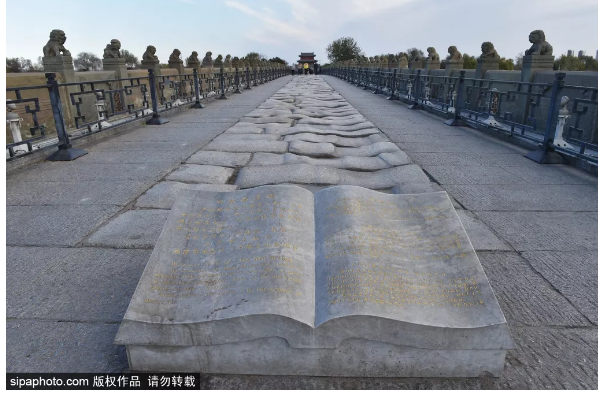
② Brief Introduction:
Lugou Bridge (National Classic Red Tourism Scenic Spot): The longest joint arch stone bridge in North China. “Lugou Xiaoyue (moon on Lugou Bridge” is one of the eight greatest scenic spots in Yanjing. The Lugou Bridge incident that broke out here on July 7, 1937 symbolize the start of the national war of resistance.
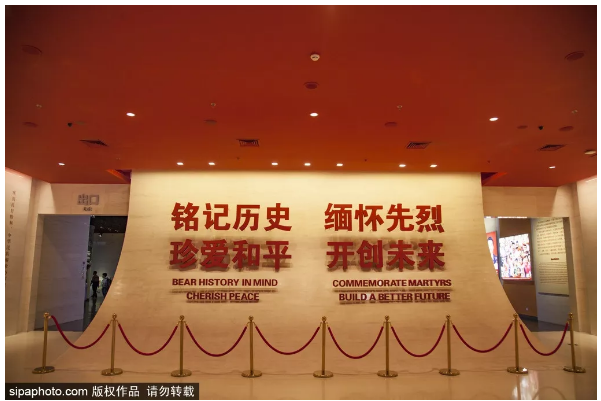
Wanping City: Located in the east of Lugou Bridge, it was built in the Chongzhen’s reign in the Ming Dynasty and was still a military fortress in the early Qing Dynasty. The July 7th Incident broke out in 1937 opened the prelude to China’s comprehensive Anti-Japanese War.
The Chinese People’s Anti-Japanese War Memorial: the only large-scale comprehensive special memorial hall in China that fully reflects the history of the Chinese People’s Anti-Japanese War. At the 50th anniversary of the Lugou Bridge Incident on July 7, 1987, the Memorial was officially completed and opened to the public.
Chinese People’s Anti-Japanese War Memorial Sculpture Garden: officially opened on August 15, 2000. According to the historical process of the Chinese People’s Anti-Japanese War, the sculpture group is divided into 4 parts, namely “Japanese Army’s Bullying”, “Strive to save the nation”, “Anti-Japanese War”, and “Justice Wins”.
04 Jiaozhuanghu Tunnel Warfare Experience Tour
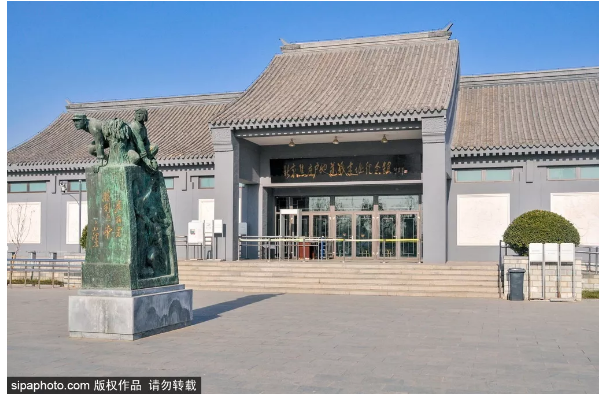
① Itinerary: Visit the authentic ruins of Jiaozhuanghu, watch the movie “Tunnel Warfare”, eat “War-time Cuisine” and visit Shunyi Olympic Water Park
② Brief Introduction:
Jiaozhuanghu Tunnel Warfare Memorial Hall (National Classic Red Tourism Scenic Spot): During the Anti-Japanese War and the War of Liberation, the people of Jiaozhuanghu used tunnels to fight the enemy bravely, and wrote a historical chapter of the people’s wars that moves everybody.
Beijing Shunyi Olympic Water Park (4A): the venue for all rowingevents in the 29th Olympic Games in 2008. The park consists of four parts: Lighthouse Square, World Sailing Base, Ecological Square and Water Sports Base. Here, you can enjoy your leisure time with green plants by the water.
05 Tian’anmen Square Red Tour
① Itinerary: Walk high on the Tian’anmen Gate, visit the National Museum of China and Beijing Planning Exhibition Hall
② Brief Introduction:
Tian’anmen (National Classic Red Tourism Scenic Spot): on October 1, 1949, the founding ceremony of People’s Republic of China was held here. Tian’anmen Square is a symbolic building of New China and was officially opened to the public on January 1, 1988.
National Museum of China (National Classic Red Tourism Scenic Spot): in February 2003, it was established on the basis of the merger of the original Chinese History Museum and the Chinese Revolution Museum. Reopened in March 2011, the museum contains two basic exhibitions: “Ancient China” and “the Road of Rejuvenation”. There are more than ten themed exhibitions of various art categories as well as international exchange exhibitions.
Beijing Planning Exhibition Hall: mainly displays the past, present and future of this great city, Beijing. The exhibition hall is divided into 4 floors: Beijing Bay Bronze Sculpture, District and County Planning Exhibition, Changes of the Ancient City, Urban Planning Model, Metropolis in the World and Future Home Exhibition.
06 War-time Army Expo Tour
① Itinerary: Visit the Military Museum of the Chinese People's Revolution and the Chinese Century Altar
② Brief Introduction:
Military Museum of the Chinese People's Revolution (National Classic Red Tourism Scenic Spot): China’s only large-scale comprehensive military museum, officially opened during the 1960 Army Day. There are currently more than 340,000 cultural relics and other collections.
China Century Altar: built to welcome the new millennium of the 21st century. Sitting on the north and facing south, it is composed of the main structure, Bronze Path, the Holy Flame Square, the cross bridge, the Century Hall and the Art Hall, etc. It is a large art gallery integrating art collection, display and research.
07 Witness the History in Dongcheng
① Itinerary: visit Beijing Police Museum or Beijing Railway Museum, Qianmen Street
② Brief Introduction:
Beijing Police Museum: the former site of Citibank Beijing Branch. It was opened to the public in August 2001, including 4 exhibition halls with a total of more than 7,000 pieces and more than 1,500 pieces on display.
China Railway Museum: its full name is the former site of Zhengyangmen East Station of Peking-Mukden Railway, commonly known as Qianmen East Station. In August 2008, Qianmen East Station was transformed into the China Railway Museum (Qianmen Hall) and officially opened to the public.
Qianmen Street: It starts from Qianmen Moon Bay in the north and reaches the intersection of Tianqiao in the south, and is connected to Tianqiao South Street. In total it is about 1600 meters long. It is a well-known commercial street in Beijing with many time-honoured brands. In 2008, in order to prepare for the Olympic Games, it was rebuilt and changed to a pedestrian street to restore the style of the late Qing Dynasty and the early years of the Republic of China, and became a place that embodies the culture of old Beijing.
08 Red Tour of Former Residence in Xicheng
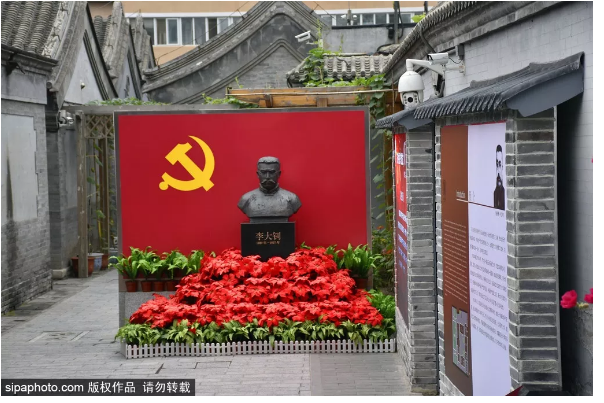
① Itinerary: visit the Lu Xun Memorial Hall or the former residence of Li Dazhao, Beijing Xuannan Cultural Museum
② Brief Introduction:
Li Dazhao’s former residence: Li Dazhao has worked and lived in Beijing for ten years in 8 places. This house is where he lived from 1920 to 1924, which is the longest residence time of his stay in Beijing. Here, Li Dazhao had made tremendous contributions to the publicity of Marxism, the creation of the Chinese Communist Party, the establishment of the National United Front Against Japanese Aggression, the consolidation and development of the Kuomintang-CPC cooperation, and to his leadership of the revolutionary movement in north China.
Beijing Lu Xun Museum: No. 21 Xisan Tiao at the entrance of the inner palace of Fucheng Gate is a self-purchased residence by Lu Xun. Here, Lu Xun worked hard on his works Wild Grass, Hua Gai Ji, Sequel to the Hua Gai Ji, Grave, Wandering, Zhaohua Xishi (Morning Flowers Plucked at Dusk), etc. In 1954, the Ministry of Culture built the Lu Xun Museum on the east side of Lu Xun’s former residence. The former residence then became an important part of the Museum.
Beijing Xuannan Cultural Museum: With the theme of Xuannan culture, the museum vividly displays the long history and rich cultural accumulation of Xuannan area. There are eight exhibition halls, among which the Heroic Footprint Exhibition Hall displays many revolutionary pioneers such as Sun Zhongshan, Chen Duxiu, Li Dazhao, Mao Zedong , Zhou Enlai, etc., who stood in the forefront of their time, exploring the path of national rejuvenation, with their footprint of fighring left in Xuannan.
09 Sunrise Oriental Chaoyang Tour
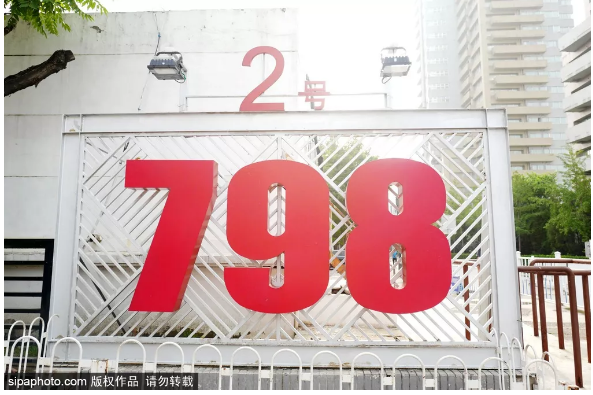
① Itinerary: visit the Chinese Film Museum and the Beijing 798 Art Zone
② Brief Introduction:
China Film Museum: the world’s largest national film professional museum at present. It is an art hall that shows the development history of Chinese film in the past 100 years, exhibits various film technology, publicizes film culture, and conducts academic exchange research.
Beijing 798 Art Zone: an art zone featuring contemporary art, and has become an exhibition and demonstration centre for Chinese culture and art. It is a cultural and creative industry gathering area influential both at home and abroad.
10 Red Leaves and Frost Days Tour in Haidian
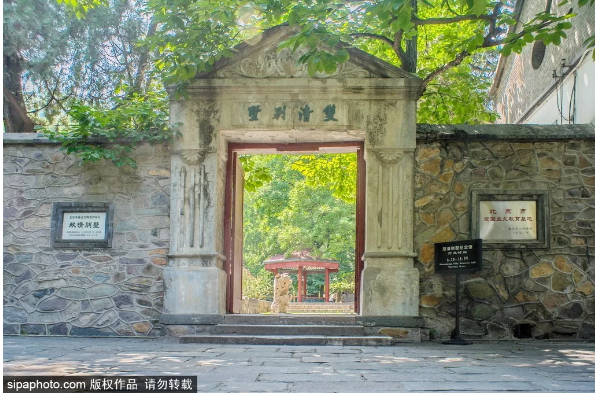
① Itinerary: Visit Shuangqing Villa and the Fragrant Hills (or Xiangshan Park)
② Brief Introduction:
Shuangqing Villa: The earliest place of residence and office where the CPC Central Committee moved to Peiping on March 25, 1949. Here maintains the original display of Mao Zedong’s life and work, and the place where Mao Zedong and his son had intimate talks - the Hexagonal Pavilion.
Xiangshan Park: a famous large park with royal features. The King Kong Throne Tower of Biyun Temple is the temporary lay place for Mr. Sun Yat-sen’s coffin; Shuangqing Villa is the earliest place where Mao Zedong and the CPC Central Committee stationed in Peiping to live and work. Every year from mid-October to early November, people come to hike and awe at the red leaves during Xiangshan Red Leaf Festival.
11 Miaofeng Mountain Information Station Tour
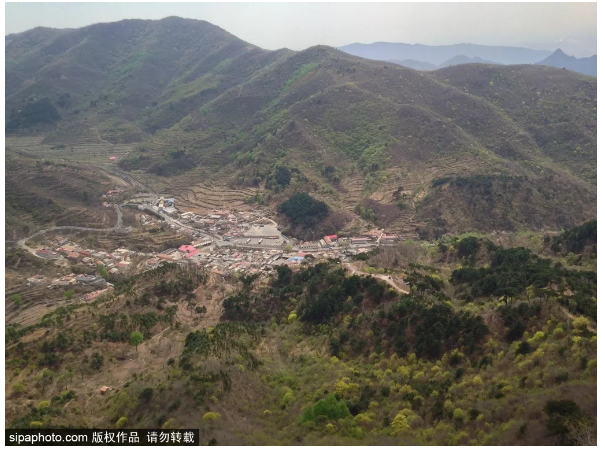
① Itinerary: Visit the Memorial Hall of Pingxi Information and Transportation Liaison Station, climb the Miaofeng Mountain and listen to the story of the Anti-Japanese War
② Brief Introduction:
The Memorial Hall of Pingxi Information and Transportation Liaison Station: From June 1939 to January 1949, the Pingxi Information and Transportation Liaison Station is known for its legends about delivering information, escorting staffs, telecommunications and supplies. The museum was officially opened in April 2009 and became the first public exhibition centre in Beijing with the theme of the front-line intelligence.
Miaofeng Mountain Scenic Area: During the Anti-Japanese War and the War of Liberation, Miaofeng Mountain and Jiangou Village at the foot of the mountain were important transportation stations on the secret traffic line of Pingxi, leaving many touching stories of their struggle.
12 Jingxi Red Mountain Village Tour
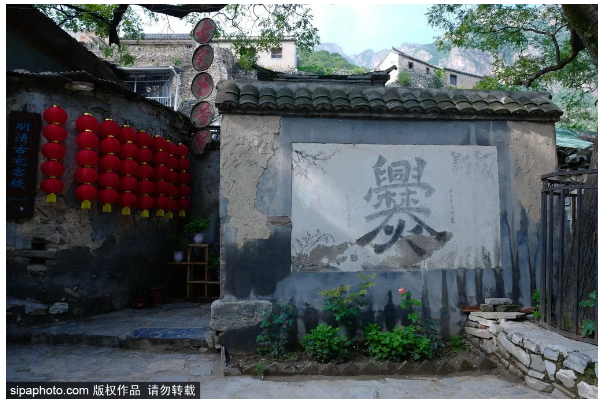
① Itinerary: Visit Malan Village’s Marching Command Headquarters Site Exhibition Hall and Cuandixia Village
② Brief Introduction:
Jirecha Marching Command Headquarters Site Exhibition Hall: In October 1939, Jirecha Marching Command Headquarters was stationed in Malan Village. In January 1940, it was bombed by enemy aircraft, and the headquarters had to transfer away from Malan Village. In 1996, the Party branch of Malan Village proposed that all villagers raise funds and donate materials to prepare for the construction of the “Jirecha Marching Command Headquarters Site Exhibition Hall”.
Cuandixia Village: a model village of the Anti-Japanese War. More than 70 young and middle-aged males joined the Eighth Route Army after the meeting of the “Youth National Salvation Association”. In recent years, Cuandixia Village has actively developed tourism and has become a famous tourism mountainous village. Starting from May 1, 2009, the Cubai Scenic Area, including Cuandixia Village, Baiyu Village, Shuangshitou Village and Huangling West Village, was established.
13 Tour of the Birthplace of the Red Song
① Itinerary: visit the birthplace of “Without the Communist Party, There Would Be No New China” and Baicaopan
② Brief Introduction:
“Without the Communist Party, There Would Be No New China” Memorial Hall (Tangshang Village): Tangshang Village is where the song “Without the Communist Party, There Would Be No New China” was written. On June 28, 2001, the unveiling ceremony of the memorial sculpture at the birthplace of this song was held here to celebrate the 80th anniversary of the founding of the CPC. Tangshang Village has thus become “the birthplace of red songs, the village of red tourism”.
Baicaopan Natural Scenic Area: the main peak of Baihua Mountain, including eight scenic spots on the top and eight at the bottom. Don’t talk about Baihua Mountain if you don’t come to Baicaopan. You will find skies beyond the sky only when you come to Baicaopan.
14 Anti-Japanese Warfare Shidu Tour
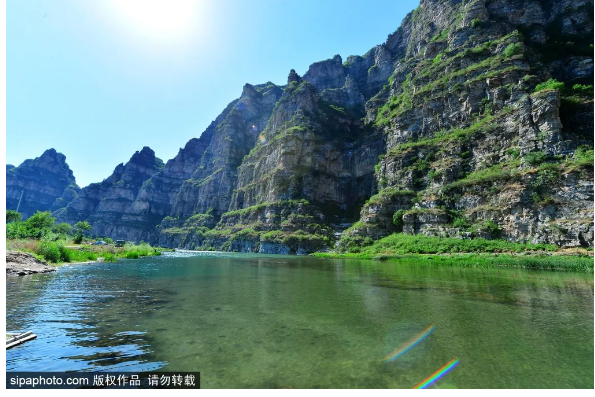
① Itinerary: Visit the Pingxi Memorial Hall of Anti-Japanese War and Shidu
② Brief Introduction:
Pingxi Memorial Hall of Anti-Japanese War: to pay tribute to the heroes of the martyrs, the Martyrs Monument, the Pingxi Memorial Hall of Anti-Japanese War and a hundred martyrs monuments have been built.
Shidu Scenic Area: The Juma River turned 10 large bends within 30 miles in Fangshan, forming 10 ferries, so people call it “Shidu (ten ferries)”, which is a national-level geological park and a city-level scenic area.
15 Strong Pass of the Enemy in Changping Tour
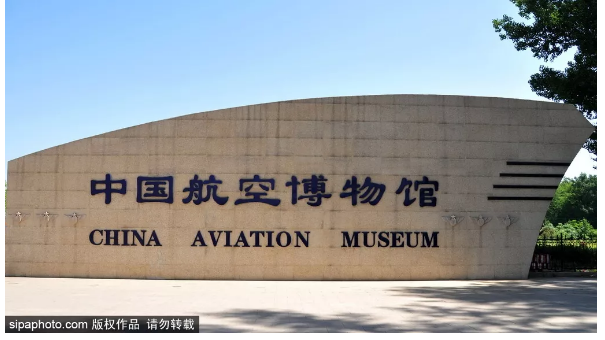
① Itinerary: Visit the China Aviation Museum, Xiaotangshan Modern Agricultural Science and Technology Demonstration Park
② Brief Introduction:
The China Aviation Museum: currently has a collection of more than 139 models of 322 aircrafts, as well as more than 2,800 samples of weapons and equipment including surface-to-air missiles, anti-aircraft guns, air defense radars, aerial bombs, and aerial cameras, ranking the top five in the world, the first in Asia, and the only large-scale aviation treasures gathering place in China.
Xiaotangshan Agricultural Science and Technology Demonstration Park: divided into seven districts and one park, it was rated as a National Agricultural Science and Technology Demonstration Site in 2001 by the Ministry of Science and Technology, and is a “National Agricultural Tourism Demonstration Site”.
16 Yuzi Mountain Anti-Japanese Ruins Tour
① Itinerary: Visit Yuzishan Anti-Japanese War Memorial Museum and Jingdong Grand Canyon
② Brief Introduction:
Yuzishan Anti-Japanese War Memorial: The museum takes the history of the Anti-Japanese struggle in the eastern Hebei region as its background, and uses historical facts during the Anti-Japanese struggle of people in Pinggu and its surrounding areas as a clue to vividly display the anti-oppression, anti-aggression, and liberation of both military and civilian during the anti-Japanese struggles.
Jingdong Grand Canyon Scenic Area: a During battlefield during the Anti-Japanese War. While enjoying the beautiful natural scenery, you can also visit the Yuzishan Anti-Japanese War Memorial, the ruins of the Yuzishan massacre, and the ruins of the Eighth Route Army Arsenal. Pay tribute to the martyrs and conduct patriotism education.
17 Miaoshang Village Revolutionary Tradition Tour
① Itinerary: Visit the Memorial Site of the Party Branch of Miaoshang Village, Xingmei Film and Television City
② Brief Introduction:
Miaoshang Village Party Branch Memorial Site: the first Party branch in Huairou District. The village has 5 revolutionary tradition education exhibition rooms, with 52 pictures, paintings and other exhibits. The shacks used during the activities of the Party branch, and the caves for storing grain and keeping the wounded and sick are still preserved.
Xingmei Film and Television City: the largest film and television filming location and post-production base in northern China. More than 100 film and television dramas have been filmed here; as you enter, you can not only enjoy the Ming and Qing street scenes, beautiful scenery of Jiangnan, but also experience the connotation and mystery of film and television culture.
18 Paying Tribute to the Martyrs in Miyun Tour
① Itinerary: Visit Bai Yihua Martyr Cemetery and Heilongtan Scenic Area
② Brief Introduction:
Bai Yihua Martyr Cemetery: The Baiyihua Martyrs Cemetery covers an area of more than 3 acres. The solemn and majestic monument of Bai Yihua Martyr stands high on the top of the mountain. In July 2006, the Memorial Hall of the Martyrs of Bai Yihua and the Exhibition Hall of the History of the Anti-Japanese War in Miyun District, located on the north side of the entrance of the cemetery, were completed and launched.
Heilongtan Scenic Area: There are 3 waterfalls and 18 pools in a canyon with a total length of 4 kilometers and a water level drop of 220 meters.
19 Pingbei Anti-Japanese Warfare Tour
① Itenerary: Visit the Pingbei Anti-Japanese Martyrs Memorial Park and the Longqingxia Scenic Area
② Brief Introduction:
Pingbei Anti-Japanese Martyrs Memorial Park: To commemorate the martyrs and educate the descendants, the Pingbei Anti-Japanese Martyrs Memorial Park and Monument was established in 1989; the memorial hall was opened in July 1997. With a large number of photos and Anti-Japanese War cultural relics, it exposes the Japanese invaders’ disastrous deeds towards Pingbei people, and also praises the patriotic spirit of the Pingbei people during their aggression.
Longqing Gorge: known as the “Lijiang River” beyond the Great Wall, is known for its beauty as southern China and the magnificence of northern China. The Longqingxia Ice Lantern Art Festival has been held for 25 years.
20 Canal Households Tongzhou Tour

① Itinerary: Visit the canal scenic spot,the National Militia Weaponry Exhibition Hall
② Brief Introduction:
Tongzhou Canal Park: Canal Park is a large green ecological park in Jingdong. You can visit the Grand Canal Cultural Square and listen to the ancient stories of the Grand Canal; take a cruise along the Grand Canal to see the scenery on both sides; watch the antique boats used for the Olympic torch relay.
The Chinese Militia Weaponry Exhibition Hall: consists of the Preface Hall, China Militia Development History Hall, Light Weapons Expo Hall, Artillery Hall, Field Battle Mountain Gunnery, etc. There are more than 10,000 various cultural relics in the hall, with a large number and variety of exhibits, it can be called a grand view of the world’s weapons display. (The museum is only open to the Party, government, military, government agencies, enterprises, institutions, and student groups. Reservations are required for the tour.)
21 Shichahai Former Residence Tour
① Itinerary: Visit the former residence of Song Qingling, Shichahai Scenic Area, Prince Gong’s Mansion
② Brief Introduction:
Song Qingling’s Former Residence: originally the Wangfu Garden, and later transformed into an elegant and comfortable courtyard combining Chinese and Western styles for Comrade Song Qingling to work and live.
Shichahai Scenic Area: Shichahai is the only open scenic area with open water surface in the inner city of Beijing. It is also a historical block with the largest area and the most complete preservation in Beijing. It occupies a unique position in the history of Beijing city planning and construction. It is one of the greatest scenic spots of Yanjing, including the three water areas of Qianhai, Houhai and Xihai.
Prince Gong’s Mansion: the largest royal mansion in the Qing Dynasty. It has gone through the historical process of the Qing Dynasty from its heyday to its decline, bearing extremely rich historical and cultural information. Therefore, there is a saying that “A Mansion of Prince Gong, half of the history of the Qing Dynasty”.
22 Tour along Revolutionary Great Men’s Footprints
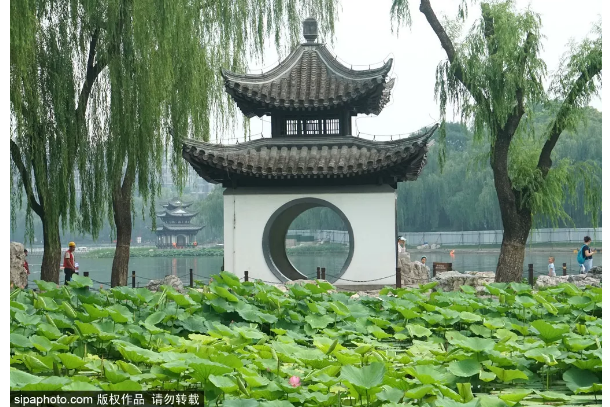
① Itinerary: Visit Taoranting Park, Daguanyuan (Grand View Garden) and Fayuan Temple
② Brief Introduction:
Taoranting Park: The famous Taoranting Pavilion is known for its beautiful scenery and rich culture. After the May Fourth Movement, the older generation of revolutionaries such as Li Dazhao, Mao Zedong, and Zhou Enlai successively carried out revolutionary activities here. It then became a monumental revolutionary site in Beijing.
Beijing Daguanyuan: a cultural garden that reproduces the landscape of the “Daguanyuan” in the classic Chinese literary book Dream of the Red Mansions. The Garden is based on the author’s description in the book, withChinese classical architecture techniques and traditional gardening techniques.
Fayuan Temple: The oldest ancient temple building group preserved in the city of Beijing. It is a religious museum under the Chinese Buddhist Association. The temple is famous for lilac and begonia, which attracts many celebrities to compose songs and poems.
23 Military Experience Tour
① Itinerary: Visit the China North International Shooting Range, the People’s Liberation Army (PLA) Tank Museum
② Brief Introduction:
China North International Shooting Range: Built in accordance with the central reform and opening-up policy and the policy of transfer military technology to civil use, it is the first and the largest shooting venue in China. There is a light weapons exhibition hall inside, which is an education base for raising national awareness of national defence.
The PLA Tank Museum: the only tank museum in China and even Asia, reflecting the growth of China’s armored forces from scratch, from weak to strong.
24 Glorious Olympic Tour
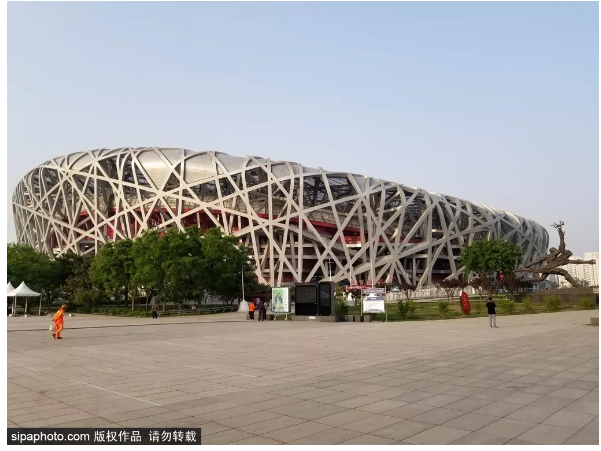
① Itinerary: visit China Sports Museum, National Stadium and the National Aquatics Centre.
② Brief Introduction:
China Sports Museum: with more than 4,700 sports cultural relics in ancient and modern times, and more than 5000 pictures of precious sports cultural relics, it is a multi-functional and comprehensive new social education site for promoting and studying Chinese sports culture and an important platform for understanding Chinese sports.
National Stadium (Bird’s Nest): located in the south of the central area of the Beijing Olympic Park, it is the main stadium for the 2008 Beijing Olympic Games. After the Olympic Games, it became a large professional venue for Beijing citizens to participate in sports activities and enjoy sports entertainment, and a landmark sports building and Olympic heritage.
National Aquatics Centre: also known as the “Water Cube”, is located in the Beijing Olympic Park. It is the main swimming pool built in Beijing for the 2008 Summer Olympic Games and one of the landmark buildings of the 2008 Beijing Olympic Games.
25 Ancient Temple Tour
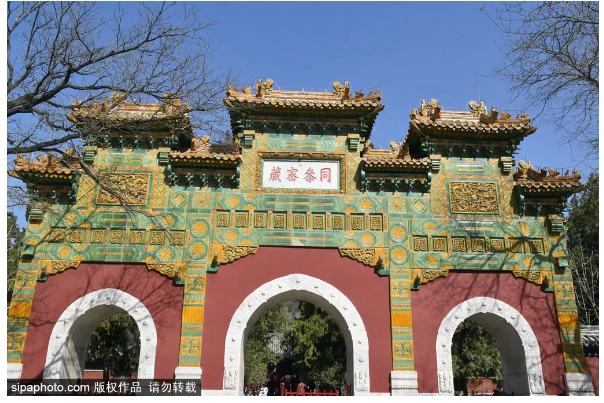
① Itinerary: visit the Memorial Hall of the Anti-Japanese War Generals at Xianglu Park, the Wofo Temple and Biyun Temple.
② Brief Introduction:
The Memorial Hall of the Anti-Japanese War Generals at Xianglu Park: covering more than 30 major battles, the exhibition hall includes background introduction, summary of the battles, schematic map and combat sequence list and some of the famous generals and heroes during the Anti-Japanese War. It fully reflects the famous battles, generals and heroes in the 14-year Anti-Japanese War and the great Anti-Japanese spirit embodied in them.
Wofo Temple (Temple of the Sleeping Buddha): built during the Zhenguan’s reign in Tang Dynasty, it was originally called Doushuai Temple. As a sandalwood sleeping Buddha was carved in the temple in Tang Dynasty, and later, in the Yuan Dynasty, a huge bronze statue of Sakyamuni Buddha Nirvana was cast in the temple. Therefore, this temple called “Wofo Temple”.
Biyun Temple: located on the north side of Xiangshan Park in Haidian District, Beijing, and on the east side of Jubao Mountain along Xishan Mountain, it is a group of compact and well-preserved garden-style temples. The temple sits in the west and faces the east and is built along the mountain.
26 Chaoyang Fashion Tour
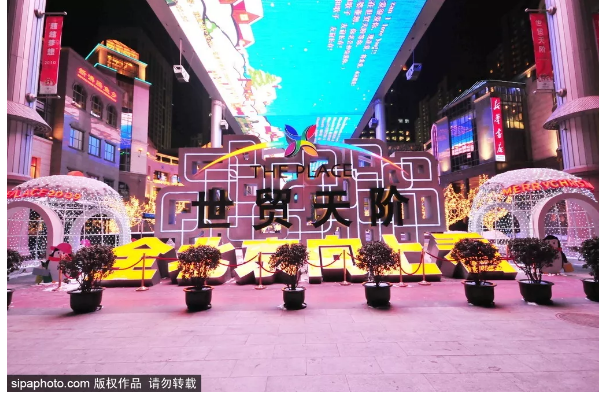
① Itinerary: visit Ma Jun Martyr’s Tomb, World Trade Centre, and go shopping in Sanlitun Taikoo Li
② Brief Introduction:
Ma Jun Martyr’s Tomb: made of white marble, surrounded by white stones around the platform. In the Ma Jun Martyr’s Memorial Room, there is a brief introduction to his life, introduction his heroic stories, photos, items he once used, etc.
World Trade Centre: consists of leisure shopping mall and office buildings. With a LED screen of 250 meters long and 30 meters wide, an elegant and luxurious stepped square and a semi-enclosed pedestrian street, you can find a sense of a noble and stylish business atmosphere all around you.
Taikoo Li Sanlitun: an open shopping area representing a kind of humanistic fashion, so everything here is based on human, so that in addition to enjoying food, shopping and free leisure, people can also create art and lead the fashion.
27 Virgin Forest Adventure
① Itinerary: visit Hongde Martyrs Cemetery, and Labagou Virgin Forest Scenic Area
② Brief Introduction:
Hongde Martyrs Cemetery: surrounded by mountains and water, pines and cypresses, solemn bronze-coloured relief walls and texts, battle scenes during the War of Liberation are illustrated vividly in the Cemetery, where more than 600 revolutionary martyrs sacrificed here.
Labagou Virgin Forest Scenic Area: the only virgin forest natural ecological scenic spot in Beijing, with dense forest vegetation and a large variety of wild animals, known as a natural oxygen bar.
28 Great Wall Anti-Japanese War Memorial Tour
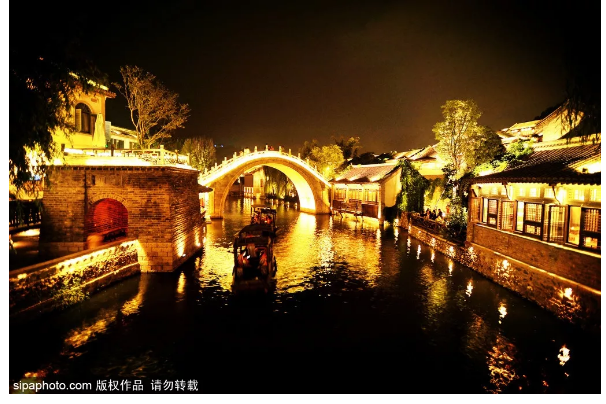
① Itinerary: visit the Gubeikou Great Wall Anti-Japanese War Museum and the scenic spot of Gubei Water Town
② Brief Introduction:
Gubeikou Great Wall Anti-Japanese War Museum: located on the west side of the Great Wall Anti-Japanese War Cemetery, it vividly illustrates the heroic history of Gubeijou War, and was built to commemorate the Anti-Japanese national martyrs and carry forward the spirit of the Anti-Japanese War.
Gubei Water Town Scenic Spot: backed by the most beautiful and dangerous Simatai Great Wall in China, surrounded by the Mandarin Duck Lake Reservoir, it is a rare ancient village in the suburbs of Beijing which is blessed with both mountain and water. It has 430,000 ㎡ of exquisite mountain courtyard buildings of Ming and Qing dynasties and the Republic of China styles.
29 Ancient Imperial City Tour along Central Axis
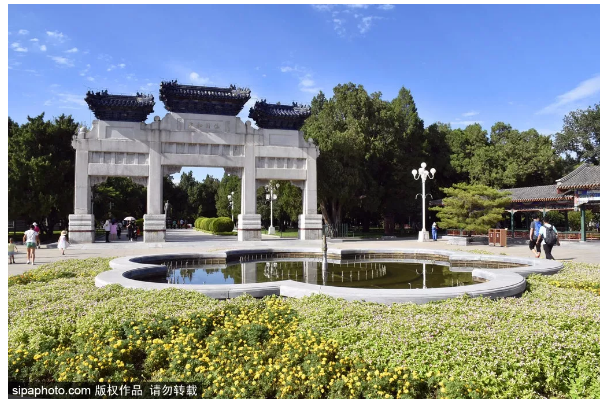
① Itinerary: Visit Beijing Zhongshan Park, climb the Jingshan Mountain, and the Bell and Drum Tower
② Brief Introduction:
Beijing Zhongshan Park: originally known as Central Park. In 1925, when Mr. Sun Yat-sen passed away, his coffin was placed in the garden (now Zhongshan Hall) for a public sacrifice. To commemorate this great pioneer of the democratic revolution, it was renamed Zhongshan Park in 1928.
Jingshan Park: facing the North Sea in the west, and the Shenwumen of the Forbidden City across the street in the south, it is the imperial garden of the Ming and Qing dynasties. The park is located on the central axis of Beijing City in the Ming and Qing Dynasties. The Jingshan Mountain in the centre of the Park was once the highest place of Beijing.
Bell and Drum Tower: the time-reporting centre in the capital city of the Yuan, Ming and Qing dynasties. In the construction history of bell and drum tower in cities, the bell and drum tower in Beijing has the largest scale and the highest form. It is one of the iconic buildings in the ancient capital Beijing, and also an important building that has witnessed China’s history for nearly a hundred years.
30 Majestic Great Wall Tour
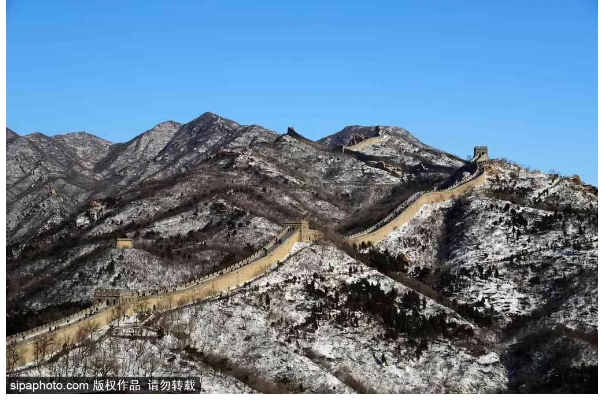
① Itinerary: Visit the Great Wall Museum of China and Badaling Scenic Area
② Brief Introduction:
The Great Wall Museum of China: a thematic museum centring on the Great Wall and comprehensively reflects the history and current status of the Great Wall. It is an antique beacon conjoined building.
Badaling Scenic Area: in addition to the long history and beautiful scenery of the Badaling Great Wall, the Scenic Area has a large China Great Wall Museum and Great Wall National Cinema, which takes visitors to the space where history and reality intersect to appreciate the style and historical culture of the Great Wall as well as national customs with a brand new feeling.
Tips
All these 30 red tourism routes are combined with local characteristic tourism resources, thus every one of them is worth trying. However, as it is the flood season in Beijing now, before travel, be sure to check the local weather, and make sure your destination is opening to public before setting off!



